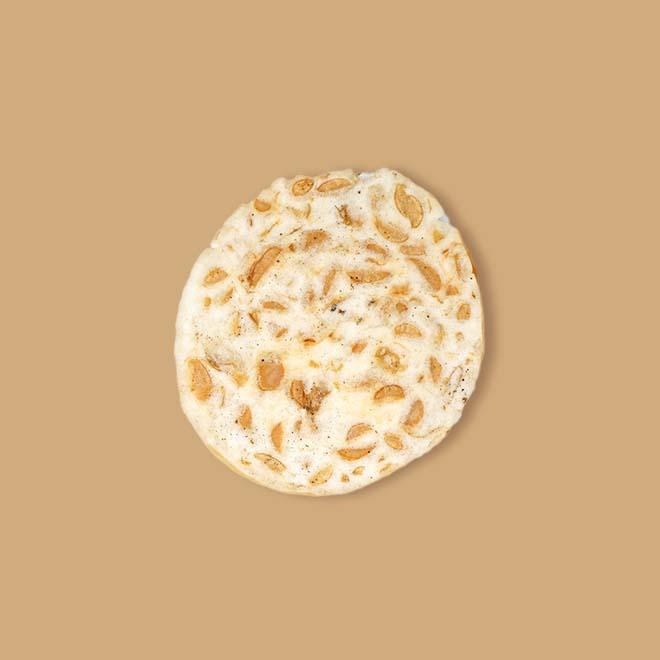Tempeh




Tempeh is a plant-based food made from soybeans, similar to tofu. It originated in Indonesia and is a staple protein source in many Southeast Asian cuisines.
Tempeh has a unique, earthy, and slightly nutty flavor with a chewy texture that can vary depending on the type and how it's prepared. It is incredibly versatile and can be used in many ways, from stir-fries and salads to burgers and tacos. It can also be crumbled and used as a meat substitute in pasta dishes and lasagna.
Tempeh can be found in the refrigerated section of grocery stores, usually near tofu or other vegan products. When buying tempeh, opt for one that's firm and dry, with no noticeable mold or discoloration. Light yellow coloration is normal due to natural fermentation.
Unopened tempeh can be stored in the refrigerator for up to two weeks. Opened tempeh can last for several days when refrigerated. Wrap it loosely in paper towels or airtight containers to prevent drying or condensation.
Make tempeh bacon by marinating thin tempeh slices in soy sauce, liquid smoke, maple syrup, and spices for a meaty, smoky "bacon" alternative. Perfect for breakfast sandwiches, salads, or crumbled over soups.
Tempeh is a natural source of beneficial probiotic bacteria. Grind it into a powder and add it to smoothies, yogurt, or other foods for an extra gut-health boost.
While the exact date is debatable, some believe tempeh production dates back over a millennium in Indonesia. It originated through spontaneous mold growth on cooked soybeans, which locals embraced and refined into the delicious food we know today.
Unlike most molds, the specific fungus used in tempeh production, Rhizopus oligosporus or Rhizopus oryzae, is beneficial. It not only binds soybeans but also enhances digestibility, unlocks nutrients, and contributes to the savory umami flavor.
During fermentation, Rhizopus consumes oxygen, creating air pockets within the tempeh structure. These tiny pockets contribute to the characteristic spongy texture and make tempeh even more appealing.
When marinading tempeh, cube it for faster marination, while thicker slices or whole pieces benefit from overnight marinade baths.
Make tempeh “meatballs” by combining crumbled tempeh with mashed potatoes, herbs, and spices, then baking or air frying for bite-sized nuggets of deliciousness.
Don't overcook tempeh! It can become tough and dry. Aim for a golden brown exterior and a slightly firm, but still moist, interior.
Tempeh boasts a whopping 10-15g of protein per 3-ounce serving, comparable to animal-based proteins. Fermentation enhances protein bioavailability, making it easier for your body to absorb. It is also a good source of dietary fiber, aiding digestion and gut health.
Corrections or improvements? Email us at
content@sidechef.com